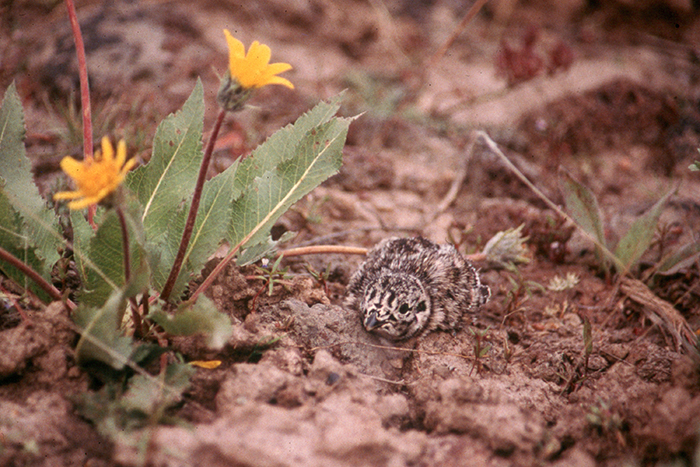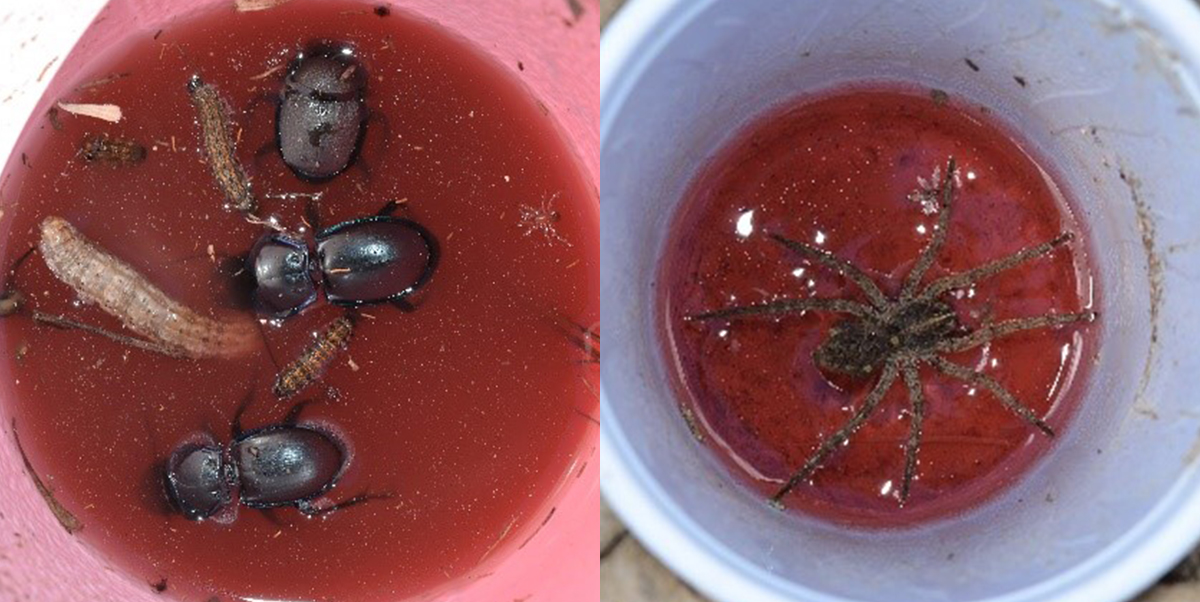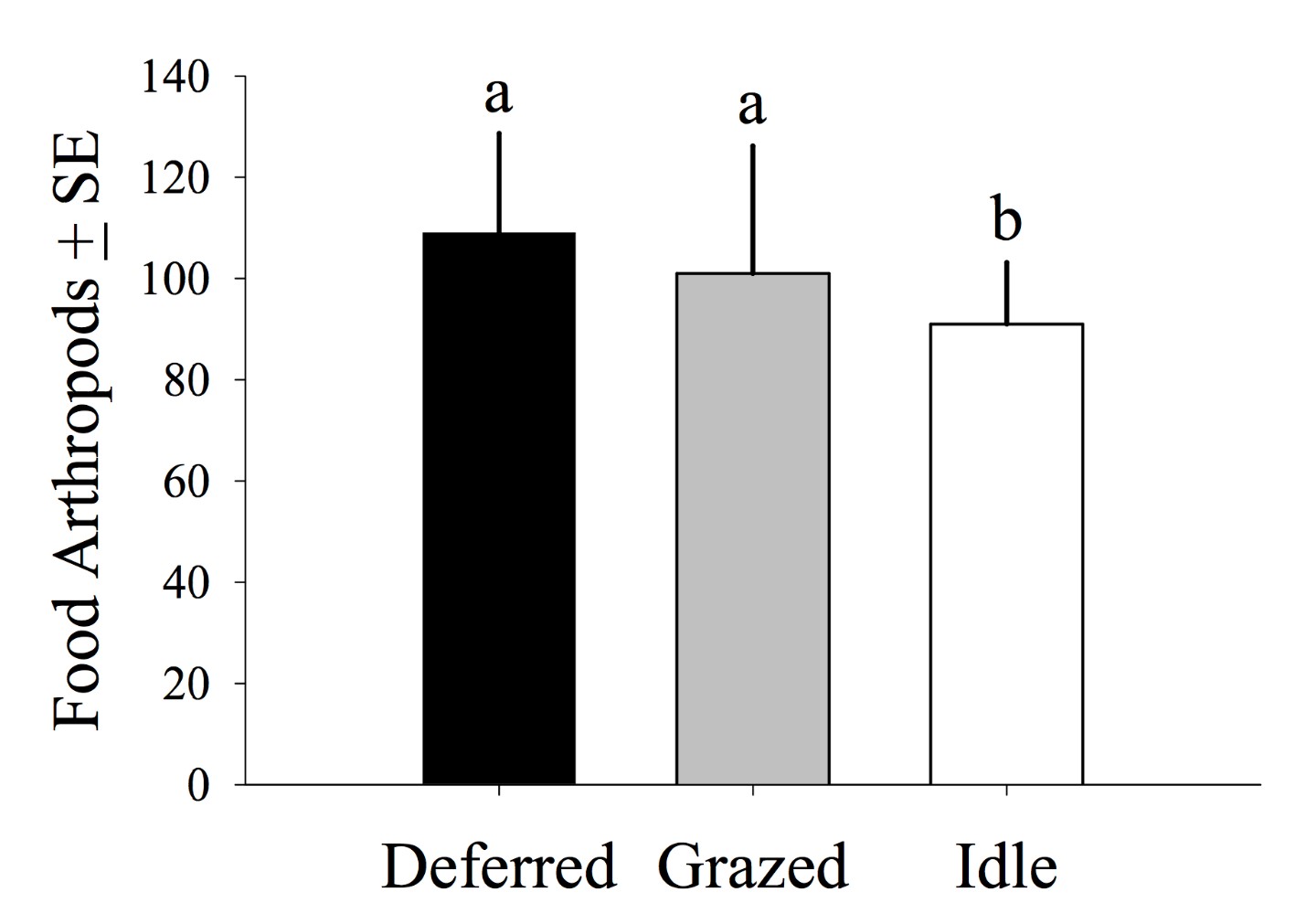Posted by Hayes Goosey and David Naugle, Montana State University and University of Montana in Conservation
Nov 25, 2018
Most ranchers have heard the saying, “what’s good for the bird is good for the herd.” New research reinforces this by showing that well-managed grazing provides more than just better habitat for sage grouse – it also produces more of the bugs that growing young birds need to eat.
A study comparing insect communities in grazed, rested, and idled pastures in Montana found that the types of insects that provide a critical food source for sage grouse chicks and other shrub- and grassland-dependent birds were 13 percent more prevalent on managed versus idled rangelands.

Grazing Lands and Insects
Land use such as livestock grazing — the most common use of rangelands — influence the abundance and composition of insects, which may have far-reaching effects on rangeland ecosystems. Grazing impacts arthropods through direct habitat disturbance as well as by changing the composition and physical structure of plant communities they rely upon.
Studies show that grazing strategies that incorporate variation in grazing intensity, such as rest-rotation grazing that defers grazing certain pastures for a year or so, may be an effective tool for maintaining arthropod biodiversity on managed rangelands.
Research shows that 50 to 60 percent of the diet of one- to four-week-old sage grouse chicks is composed of insects such as beetles, ants, and caterpillars. Predatory spiders— which researchers found in abundance in idle, ungrazed pastures — eat the bugs that sage grouse need to survive and thrive.

About the Research
Researchers from Montana State University investigated relative abundance and diversity of ground-dwelling arthropods in sagebrush habitats in central Montana from 2012–2015. The percentage of bare ground and the height of grass and sagebrush were also averaged for each location. Samples were collected weekly in three types of pastures:
- Deferred: Pastures in the “rest” phase of a rest-rotation grazing system, which involves moving livestock herds through multiple pastures during the season while leaving at least one pasture ungrazed for about 15 months to allow for plant growth and reproduction.
- Grazed: Pastures where livestock were present.
- Idle: Pastures where livestock grazing was absent for years.

Findings
Total insect catches were twice as high on idle pastures compared to managed pastures, and the totals trapped in grazed and deferred pastures did not differ. This corresponds to the reduced percentage of bare ground documented in sample areas on idled rangeland — increased grass and shrub cover likely support a higher abundance of arthropods.
But researchers discovered that the specific insect classes preferred by sage grouse were 13 percent more prevalent on managed pastures. Plus, managed rangeland supported a more diverse assemblage of ground-dwelling insects, which may be particularly beneficial for birds that rely on this critical food resource.
“Grazed rangelands were chock-full of sage grouse food compared to idled pastures where predatory spiders were most abundant,” said Hayes Goosey, with Montana State University and lead researcher for the project.
Download this new report to learn more.

Grazing Good for Ecosystems and Production
Well-managed livestock grazing of native plants is one of the best ways to benefit wildlife and working lands. Rangelands with lush native grasses, wildflowers, sagebrush, and wet meadows are the best habitat for arthropods, as well as sage grouse and hundreds of other species. Plus, managing for diverse, healthy plants put more pounds on livestock, too.
Through the Sage Grouse Initiative and Lesser Prairie Chicken Initiative, USDA’s Natural Resources Conservation Service offers technical and financial assistance to help ranchers implement a prescribed grazing system and other sustainable ranching practices. To learn more about these practices, contact your local USDA service center.
Dr. Hayes Goosey is a rangeland entomologist at Montana State University and can be reached at hgoosey@montana.edu. Dave Naugle is a wildlife biology professor at University of Montana and can be reached at david.naugle@umontana.edu.
No comments:
Post a Comment